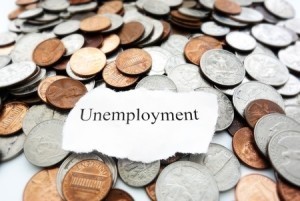 There is no avoiding this fact: Business owners pay lots of taxes. In many cases, the business has no control over tax rates. One exception is the state unemployment tax. While rates and wage caps vary from state to state, the amount a business owner pays in unemployment tax directly correlates to the amount of unemployment claims the business has. If you reduce unemployment claims, you reduce your unemployment tax rate—and who wouldn’t want that?
There is no avoiding this fact: Business owners pay lots of taxes. In many cases, the business has no control over tax rates. One exception is the state unemployment tax. While rates and wage caps vary from state to state, the amount a business owner pays in unemployment tax directly correlates to the amount of unemployment claims the business has. If you reduce unemployment claims, you reduce your unemployment tax rate—and who wouldn’t want that?
Here are six tips to help reduce unemployment claims and save your business some money:
1. Make the right hire.
This may seem obvious, but if you hire the right people on the front end, you will reduce the number of employees you need to terminate. Make sure you have a solid recruiting and selection process to find the best new hires for your company. Also, make sure you aren’t hiring unless you absolutely need to. Could you shift responsibilities and get the job done with your existing employees instead of taking a chance on hiring someone new?
2. Train well.
Employees will perform better if your company gives them proper training early and often. If you aren’t investing time and money in training your new hires, you increase the chances that they don’t work out and end up costing you money on unemployment.
3. Review performance regularly.
Make sure your employees are aware of any issues you might have with their work. Too often, employees are terminated for reasons they were unaware of. With regular performance reviews, an underperforming employee can be made aware of issues and become more productive.
4. Document performance and disciplinary actions.
If an ex-employee claims unemployment, and you decide to fight it, you won’t have a leg to stand on unless you can document the issues that led to termination.
5. Be respectful.
Neither party enjoys the termination process, but it doesn’t have to be all bad. Thank the departing employee for their time, and make sure you clearly communicate with them regarding unemployment and COBRA. Helping the employee leave on good terms might make them less likely to stay on unemployment—some people opt to stay unemployed longer just to spite their ex-employers. The longer an employee stays on unemployment, the higher your unemployment costs rate will go.
6. Help former employees land on their feet.
One of the most effective ways to reduce the time an ex-employee stays on unemployment is to help them find his or her next job. Just because the employee wasn’t the right fit for you doesn’t mean another opportunity won’t work out better. Here’s how you can help departing employees:
- Offer to help them with the job search.
- Help them revamp their resume.
- Put them in touch with some recruiters.
By following these steps, you can have a great impact on your state unemployment tax rate. This is a great (and rare) opportunity to impact your tax rate in a meaningful way.




